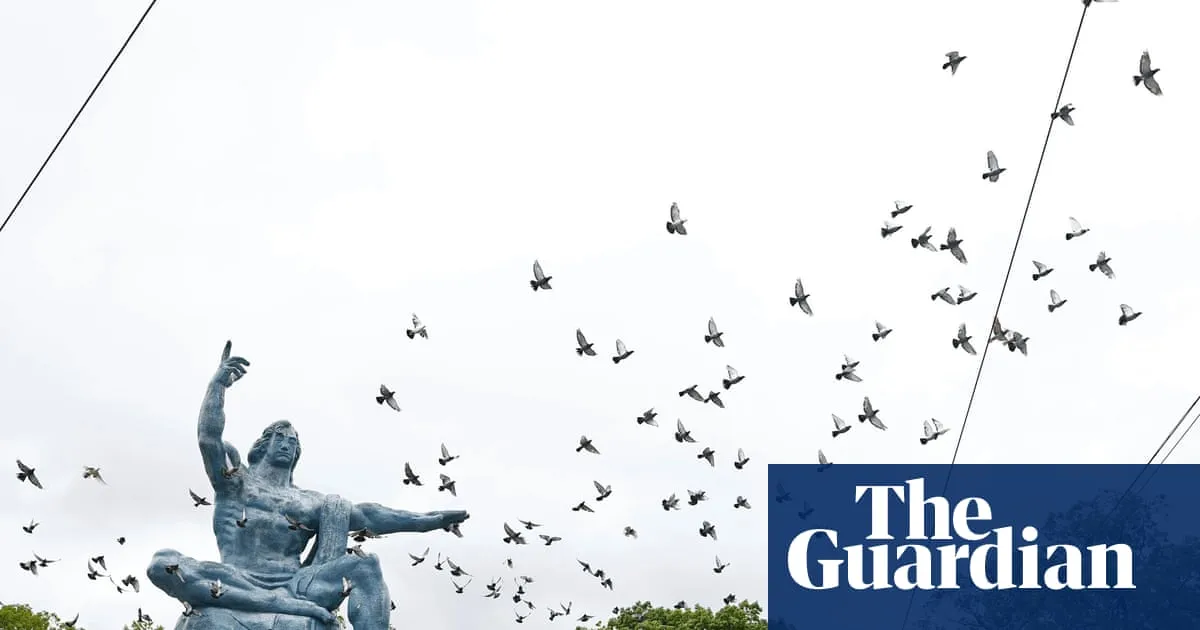
On Saturday, Nagasaki witnessed a poignant moment in history as the twin cathedral bells rang in unison for the first time in 80 years. This significant event marked the somber anniversary of the atomic bombing that devastated the city on August 9, 1945. The bells, located at the Immaculate Conception Cathedral, also known as Urakami Cathedral, chimed at 11:02 AM, precisely the moment the bomb was dropped. This was just three days after the earlier nuclear attack on Hiroshima.
The Immaculate Conception Cathedral, characterized by its striking redbrick architecture and twin bell towers perched on a hill, was reconstructed in 1959 following its near-total destruction in the catastrophic explosion. Remarkably, only one of the original bells was salvaged from the debris, leaving the northern tower silent for decades. Thanks to generous contributions from American churchgoers, a new bell was crafted and restored to the tower, reviving the cathedral’s historic sound.
Amidst heavy rains that morning, the downpour ceased just before a moment of silence was observed during the ceremony. Nagasaki Mayor Shiro Suzuki took this opportunity to urge a global cessation of armed conflicts, stating, “Eighty years have passed, and who could have imagined that the world would become like this?” He expressed grave concerns about the looming threat of nuclear war and its potential to endanger humanity.
The atomic bombing resulted in approximately 74,000 deaths in Nagasaki, following the tragic loss of around 140,000 lives in Hiroshima. Just days later, on August 15, 1945, Japan surrendered, signaling the end of World War II. While historians debate whether the bombings ultimately saved lives by hastening the war's conclusion, such discussions provide little solace to the survivors, known as hibakusha, who have endured decades of physical and psychological trauma.
During the ceremony, Hiroshi Nishioka, a 93-year-old hibakusha who was just three kilometers from the blast, shared his harrowing experiences as a teenager. “Even the lucky ones who were not severely injured gradually began to bleed from their gums and lose their hair, and one after another they died,” he recounted. His testimony underscored the enduring impact of the atomic bomb, which brought “invisible terror” even after the war's conclusion.
Nagasaki resident Atsuko Higuchi expressed her relief that the victims of the bombing would not be forgotten, stating, “Instead of thinking that these events belong to the past, we must remember that these are real events that took place.”
The chief priest of Urakami Cathedral, Kenichi Yamamura, emphasized that the restoration of the bells symbolizes the resilience of humanity. He remarked, “It’s not about forgetting the wounds of the past but recognizing them and taking action to repair and rebuild, and in doing so, working together for peace.” Yamamura views the chimes as a universal message during a time of global conflict and escalating arms races.
This year, nearly 100 countries joined in the commemorative events, including Russia, which had been excluded since its invasion of Ukraine in 2022. Notably, Israel participated after being uninvited previously due to the ongoing conflict in Gaza.
The project to restore the bells was spearheaded by James Nolan, a sociology professor at Williams College, whose grandfather contributed to the Manhattan Project. Inspired by a local Christian’s wish to hear the bells ring together, Nolan undertook a year-long lecture series across the United States to raise awareness about the atomic bomb. His efforts culminated in raising $125,000 from American Catholics to fund the new bell, which was unveiled in Nagasaki earlier this spring. Nolan shared that the reactions during the unveiling were profound, with many attendees moved to tears.
This historic moment in Nagasaki not only commemorates the past but also serves as a powerful reminder of the importance of peace and the collective responsibility of humanity to prevent such tragedies from occurring again.